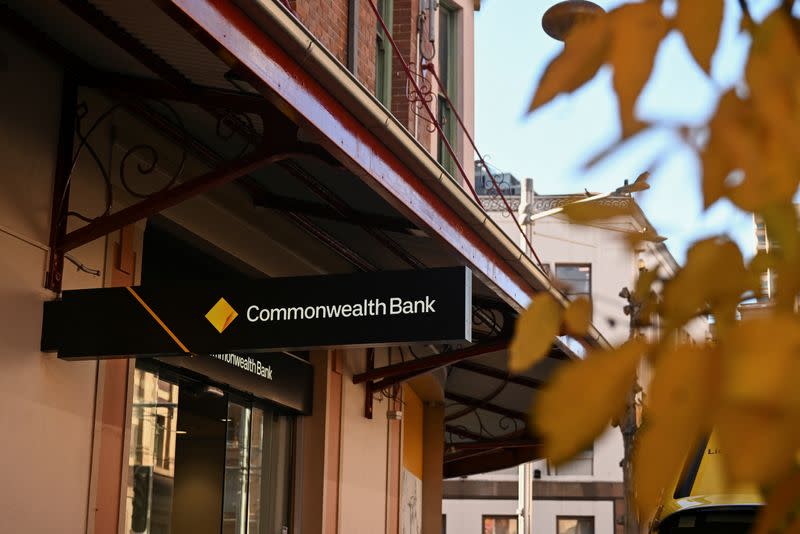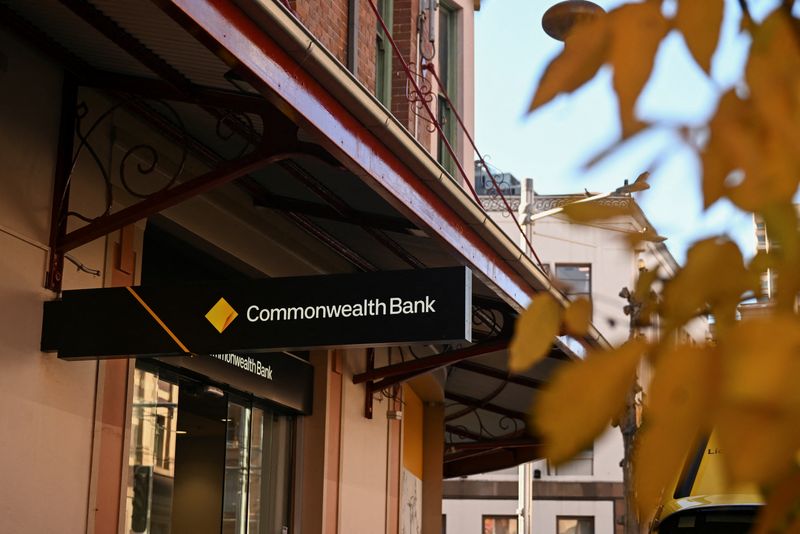The pulse of the Australian economy is undeniably tied to its financial giants. As the nation navigates a choppy sea of economic uncertainty and political turbulence, Australia’s banks find themselves facing a pivotal moment. Their upcoming earnings reports will serve as a barometer, reflecting not just their own financial health, but the overall wellbeing of the country. Are they weathering the storm, or will cracks begin to show?
The RBA’s Rate Cut Conundrum

Australia’s central bank, the Reserve Bank of Australia (RBA), delivered its first interest rate cut since November 2020 in February, a move that has sent ripples through the banking sector. This shift marks a potential turning point for bank margins, which had been bolstered by a period of higher interest rates that fueled competition among lenders. The rate cut, while intended to stimulate economic activity, presents a double-edged sword for banks. On one hand, it could potentially lead to increased lending activity and a resurgence in housing credit growth. On the other hand, it directly impacts their net interest margins, the difference between the interest they earn on loans and the interest they pay on deposits.
The expectation of further rate cuts by the RBA, possibly another quarter-point reduction on May 20, adds another layer of complexity. While some analysts have scaled back forecasts for the year due to a stronger-than-expected inflation reading, the potential for lower interest rates continues to influence investor sentiment and bank strategies.

Investor Sentiment and Share Market Volatility
The initial reaction to the RBA’s rate cut was mixed. Bank shares, which had already been underperforming due to frothy valuations and disappointing earnings, experienced a further dip. However, the situation shifted dramatically following U.S. President Donald Trump’s announcement of sweeping tariffs on April 2. This geopolitical development triggered a “safe haven trade,” with investors seeking assets perceived as less exposed to global trade disruption. Australian bank shares, particularly those of Commonwealth Bank of Australia (CBA), rallied strongly in response, with CBA shares reaching a record high on April 23.
This volatility underscores the delicate balance banks face in navigating both domestic economic factors and global market dynamics. While the rate cut and potential for further reductions present challenges to margins, the global uncertainty surrounding trade wars and economic slowdowns has also created opportunities for banks to capitalize on investor flight to safety.
Inflation’s Persistent Grip
While the RBA’s rate cut aims to stimulate economic activity, persistent inflationary pressures continue to pose a significant challenge for both banks and consumers. Rising inflation erodes consumer purchasing power, potentially impacting their ability to repay loans and leading to an increased risk of mortgage stress.
Banks are responding to this challenge by closely monitoring loan portfolios and adjusting lending strategies. They are likely to become more selective in their lending criteria, focusing on borrowers with strong credit histories and stable income streams. This shift in lending practices could lead to a slowdown in credit growth, further impacting bank profitability.
Mortgage Stress on the Rise
Mortgage affordability is a growing concern for Australian homebuyers, particularly in the face of rising interest rates and inflation. The RBA’s rate cut may provide some relief, but it is unlikely to fully alleviate the pressure on borrowers.
Banks are closely watching for signs of mortgage stress within their loan portfolios. They are likely to implement measures to support borrowers facing financial difficulties, such as offering repayment deferrals or refinancing options. However, a significant increase in mortgage defaults could have a negative impact on bank profitability and financial stability.
Impact on Bank Loan Portfolios
Mortgage stress has the potential to trigger a domino effect within banks’ loan portfolios. If a significant number of borrowers default on their mortgages, banks will face increased costs associated with loan write-offs and legal proceedings. This, in turn, could lead to a contraction in lending activity as banks become more risk-averse.
The rise in mortgage stress also raises concerns about the overall health of the Australian housing market. A decline in housing prices could further exacerbate the situation, creating a negative feedback loop that impacts both banks and consumers.
Political Winds and Share Market Volatility
The upcoming Australian federal election on May 3 is adding another layer of uncertainty to the banking sector. The election campaign has been dominated by cost-of-living anxieties, which are likely to shape banks’ mortgage books and consumer lending patterns.
Different political parties have proposed various policies aimed at addressing these concerns, such as increasing the minimum wage or providing tax relief. The outcome of the election could have a significant impact on the economic outlook and, consequently, on bank profitability.
Uncertainty and Policy Shifts
The political landscape can significantly influence investor sentiment and, by extension, bank share prices. Investors often react negatively to uncertainty, which can lead to market volatility and impact bank valuations.
Policy shifts proposed by different political parties can have a direct impact on banks’ operations and profitability. For example, changes to tax regulations or lending policies could affect banks’ income streams and their ability to generate profits.
Economic Outlook and Bank Performance
The overall economic outlook is a key driver of bank performance. Banks are acutely sensitive to changes in economic activity, interest rates, and consumer confidence. A strong economy typically leads to higher loan demand, increased profitability, and positive investor sentiment. Conversely, a weak economy can result in loan defaults, lower margins, and negative market reaction.
The upcoming election and the resulting policy changes are likely to shape the economic landscape in the months ahead. Banks will need to carefully monitor these developments and adjust their strategies accordingly.
Election Year Anxiety
Australia’s banking sector is bracing for a pivotal earnings season amidst a backdrop of intense political and economic uncertainty. The upcoming election, slated for May 3rd, is dominated by anxieties over the rising cost of living, a sentiment that is profoundly impacting consumer behavior and, consequently, bank performance.
With inflation stubbornly high and interest rate hikes squeezing household budgets, consumers are exhibiting a heightened level of caution. Mortgage stress is on the rise, forcing many Australians to reassess their spending habits and prioritize essential expenses. This shift in consumer sentiment is translating into a slowdown in lending growth and increased pressure on banks to manage their risk exposures.
Safe Haven Appeal
Against this backdrop of global economic uncertainty, Australian bank shares have witnessed a recent rebound. Following President Donald Trump’s announcement of sweeping tariffs on April 2nd, investors sought refuge in assets perceived as stable and less susceptible to trade disruptions. Australian banks, with their limited exposure to global trade tensions, became attractive havens for capital.
The financial sub-index has surged nearly 4% since the tariff announcement, a testament to the flight to safety. However, as Unionjournalism analysis reveals, this “safe haven trade” has been concentrated primarily in Commonwealth Bank of Australia (CBA). While CBA shares have soared near a record high hit on April 23rd, other banks have experienced more modest share price appreciation. This disparity suggests that investors are increasingly discerning in their allocation of capital, favoring institutions with robust fundamentals and strong risk management practices.
CBA’s Outperformance
CBA’s stellar share price performance during this period of market volatility is a testament to the bank’s strong financial position and its ability to navigate economic headwinds effectively. Several factors underpin CBA’s outperformance:
- Diversified Business Model: CBA boasts a diversified business portfolio, spanning retail, corporate, and institutional banking. This diversification provides a buffer against economic downturns that may disproportionately affect specific sectors.
- Strong Capital Position: CBA maintains a robust capital base, exceeding regulatory requirements. This strong capital position allows CBA to absorb potential losses and withstand financial shocks.
- Efficient Cost Management: CBA has consistently demonstrated its ability to control costs and improve operational efficiency. This focus on cost management has contributed to the bank’s healthy profit margins.
These factors have instilled confidence in investors, driving demand for CBA shares and contributing to its outperformance.
Earnings Season: A Test of Resilience
Westpac Leads the Charge
Westpac, Australia’s second-largest mortgage lender, kicks off the bank reporting season on Monday. Analysts anticipate a 2.6% rise in first-half net profit for Westpac, according to market data aggregator Visible Alpha. Westpac’s performance will set the tone for the rest of the banking sector, providing early insights into the impact of the evolving economic landscape on bank profitability.
NAB and ANZ Under Pressure
National Australia Bank (NAB), the leading business lender, and ANZ Group, the third-largest bank, face a more challenging earnings season. Both banks are grappling with increased exposure to business lending, which is vulnerable to a potential economic slowdown.
Analysts forecast a near 2% drop in NAB’s half-year cash earnings, reflecting concerns over rising bad debt provisions. ANZ Group is expected to report largely flat earnings, suggesting cautious optimism despite its low starting levels of bad debt provisions, which could leave it more exposed to deteriorating economic conditions, according to UBS analysts.
CBA’s Third Quarter Update
CBA, the country’s largest lender, will provide its third-quarter trading update on May 14th. Citi analysts anticipate a slight margin decline of 2 basis points for CBA, but project a profit increase of up to 7%. This outlook reflects the bank’s robust financial position and its ability to navigate the current economic environment effectively.
Conclusion
As Australia’s banks face an unprecedented earnings test amidst the country’s turbulent economic and political landscape, it becomes increasingly clear that the nation’s financial sector is at a critical juncture. According to the latest reports from Reuters, the country’s banking giants are bracing themselves for a potentially challenging period, with rising interest rates, slowing economic growth, and increased regulatory scrutiny threatening to erode their profitability.
The article highlights the complex interplay between economic, regulatory, and political factors that will shape the future of Australia’s banking sector. The Reserve Bank of Australia’s hawkish stance on interest rates, the slowing economy, and the increasing pressure from regulators to improve lending standards all pose significant challenges to the banks’ bottom line. Furthermore, the upcoming federal election and the ongoing debate over banking reform add to the uncertainty, making it increasingly difficult for banks to predict their future earnings. The significance of this development lies in its far-reaching implications for the Australian economy, as the banking sector’s performance has a direct impact on consumer confidence, business lending, and overall economic growth.
As Australia’s banks face this critical earnings test, it is essential to acknowledge the profound implications of their success or failure. A resilient banking sector is crucial for Australia’s economic prosperity, and any signs of weakness could have far-reaching consequences. In the face of these challenges, it is imperative for policymakers, regulators, and the banks themselves to work together to create a stable and supportive environment that allows the sector to thrive. The future of Australia’s banking sector will be shaped by the choices made today, and it is imperative that we learn from the lessons of the past to build a stronger, more resilient banking system for the future. Australia’s banks must rise to the challenge, and the nation’s economic prospects depend on it.
